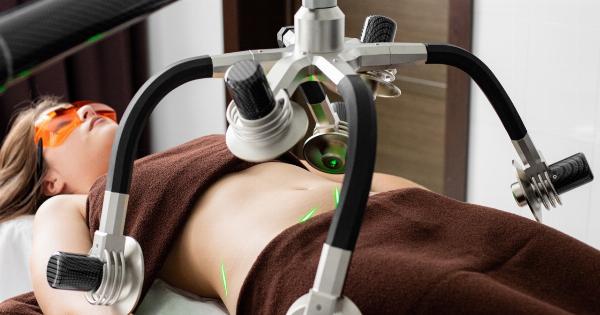Rheumatoid arthritis (RA) is a chronic autoimmune disease that causes inflammation, pain, and stiffness in the joints. It primarily affects women, with women being three times more likely to develop RA than men.
While genetics and hormonal factors play a role in its development, certain lifestyle habits can also contribute to the risk of developing the condition. Breaking these bad habits is crucial in preventing rheumatoid arthritis in women.
Habit #1: Smoking
Smoking is a well-known risk factor for developing rheumatoid arthritis. Studies have shown that smoking increases the risk of developing RA by up to 40%.
It is believed that the chemicals present in cigarettes can trigger an immune response, leading to chronic inflammation and the development of RA. Quitting smoking is not only beneficial for overall health but also essential in reducing the risk of developing this debilitating condition.
Habit #2: Sedentary Lifestyle
Leading a sedentary lifestyle devoid of regular physical activity can increase the risk of developing rheumatoid arthritis. Exercise helps maintain joint flexibility, strengthens muscles, and keeps weight in check.
Regular physical activity can also reduce inflammation and improve overall joint health. Incorporating activities like walking, swimming, or even yoga into daily routines can significantly lower the risk of developing RA.
Habit #3: Poor Diet
A diet high in processed foods, sugary drinks, and unhealthy fats can contribute to inflammation in the body. Inflammation plays a significant role in the development of rheumatoid arthritis.
On the other hand, a well-balanced diet rich in fruits, vegetables, whole grains, and lean proteins can help reduce inflammation and promote joint health. Including anti-inflammatory foods, such as oily fish, nuts, and leafy greens, can be beneficial for preventing RA.
Habit #4: Excessive Alcohol Consumption
Excessive alcohol consumption has been linked to an increased risk of developing rheumatoid arthritis. Alcohol can disrupt the normal immune function and lead to chronic inflammation, making individuals more susceptible to RA.
Limiting alcohol intake to moderate levels or abstaining from it altogether can help lower the risk of developing this autoimmune condition.
Habit #5: Stress and Poor Mental Health
Chronic stress and poor mental health can weaken the immune system and promote inflammation in the body. This can contribute to the development of rheumatoid arthritis.
Incorporating stress management techniques, such as meditation, yoga, or deep breathing exercises, can help reduce stress levels and promote overall well-being. Taking care of mental health is just as important as physical health in preventing RA.
Habit #6: Ignoring Joint Pain
Ignoring joint pain and stiffness can lead to delayed diagnosis and treatment of rheumatoid arthritis. Early intervention is crucial in managing this condition effectively.
If you experience persistent joint pain, swelling, or stiffness, it is important to consult a healthcare professional for a proper evaluation. Timely diagnosis and treatment can prevent the progression of rheumatoid arthritis and minimize its impact on daily life.
Habit #7: Lack of Vitamin D
Vitamin D deficiency has been associated with an increased risk of developing rheumatoid arthritis. This essential vitamin plays a role in regulating the immune system and reducing inflammation.
Spending a few minutes in the sun each day or consuming vitamin D-rich foods like fatty fish, fortified dairy products, and egg yolks can help maintain adequate vitamin D levels and potentially lower the risk of RA.
Habit #8: Prolonged Sitting
Prolonged sitting or remaining in one position for extended periods can increase the risk of developing rheumatoid arthritis. When we sit for prolonged periods, our muscles become stiff, and joints may become stiff and painful.
Taking regular breaks to stand up, stretch, and move around can help alleviate muscle and joint stiffness and minimize the risk of RA development.
Habit #9: Improper Posture
Poor posture can put additional stress on the joints, leading to increased wear and tear, and potentially contributing to the development of rheumatoid arthritis.
Maintaining good posture while standing, sitting, or lifting heavy objects helps distribute weight evenly and reduces joint strain. Practicing good posture habits is essential for joint health and reducing the risk of RA.
Habit #10: Skipping Routine Check-ups
Regular check-ups with a healthcare professional are crucial for maintaining overall health and detecting any potential signs of rheumatoid arthritis.
Routine check-ups allow for early detection, timely intervention, and appropriate management of the condition. Skipping or neglecting routine check-ups may delay diagnosis and hinder the prevention or control of rheumatoid arthritis in women.
Conclusion
Preventing rheumatoid arthritis in women involves breaking bad habits and adopting a healthy lifestyle.
Factors such as smoking, a sedentary lifestyle, poor diet, excessive alcohol consumption, stress, ignoring joint pain, vitamin D deficiency, prolonged sitting, improper posture, and skipping routine check-ups can all contribute to the development of RA.
By making positive changes such as quitting smoking, incorporating regular exercise, eating a balanced diet, managing stress, seeking medical attention for joint pain, ensuring adequate vitamin D levels, maintaining proper posture, and attending routine check-ups, women can significantly reduce their risk of developing rheumatoid arthritis and lead healthier lives.































